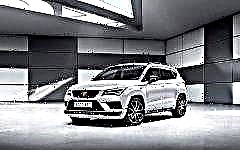Car owners often face such a problem as loss of color, tarnishing of the car body coating. Specially designed protective coatings - nanoceramics and liquid glass, allow prolonging the effect of a "polished" car.

The content of the article:
- Car protective coatings
- Everglass nanoceramics
- Willson liquid glass
- The impact of nanoceramics on cars
- Pros of protective coatings
- Car processing time
Even a few months of car use can lead to a loss of color saturation and gloss. Due to minor damage, scratches, chips, the paintwork begins to fade. It is almost impossible to avoid this. But you can eliminate these shortcomings with the help of polishing, but the effect of such a procedure is very short-term, and lasts several months. Car body nanoceramics can be used to prolong the effect. The most well-proven ones are "Liquid Glass" and "Nanoceramics".
Car protective coatings

The protective coating has several advantages, due to its composition, which promotes the penetration of ceramic polish into the paintwork at the molecular level, which allows it to be used successfully not only for polishing new cars, but also for vintage cars.
Everglass nanoceramics
Everglass, a superhydrophobic ceramic coating for the body of a premium car, contributes to reliable protection for up to one year. Nanoceramics will save the car from the influence of external factors, namely, severe frosts, reagents, etc. In addition, the advantage of nanoceramics is the self-cleaning effect of the body. Those who have already tried Everglass confirm the lower level of contamination.
Willson liquid glass
Willson Body Glass Guard, another product that will help, throughout the year, without problems and trying to keep the car looking in perfect condition. This result is achieved primarily due to the composition, because Willson Body Glass Guard consists of SiO2 liquid glass. It is recommended, to improve the result, to apply water glass as an alternative ceramic protective coating if it is not possible to apply the latter.
The impact of nanoceramics on cars

The combination of quartz and silicon nanoparticles is nanoceramics. Among its main features are: resistance and strength to all kinds of aggressive environmental influences.
At the molecular level, as a result of the assistance of paintwork and nanoceramic, nanoceramics saturates all the pores in the varnish, which creates a very durable ceramic protection.
Pros of protective coatings

First of all, nanoceramics allows you to save your car from minor damages and scratches. Due to the presence of quartz in its composition, this substance increases the strength of the varnish several times, which allows avoiding small damages and chips for up to 3 years.
Secondly, the protective coating of nano-ceramics provides maximum color depth and brightness, and protection from UV damage. The car looks like it has just been polished. And the special additives that are included in the composition prevent the paint from fading. Thirdly, this product will save money and time. All because of its hydrophobic and antistatic properties, which help the coating stay clean and dry, as the water drains away, and it takes with it all the dust and dirt. Since the car, due to nanoceramics, will not need a large number of washes (approximately 3 times less) - this will save you money and, accordingly, time.
Car processing time

When performing its work, the car studio uses polishing systems that are produced by RUPES (Italy), Makita (Japan), 3M (USA). The main advantage of this technique for applying nanoceramics to the car body is the use of technological conditions that are recommended by the manufacturer of polishing materials and the nanoceramics itself.
The procedure for applying nanoceramic to the car body lasts 2-3 days. During this period, the car will go through 13 stages, which include cleaning, degreasing, and finally processing the body with nanoceramic.
To summarize everything, the procedure for cleaning the surface and washing the car consists of 4 stages, in total time it takes about an hour. Cleaning is followed by degreasing, then you need to close all the elements that are not polished with adhesive tape, sometimes you have to rub the entire surface with sandpaper. This all happens for 10 hours.
This is followed by polishing the car, on average, this procedure lasts 7 hours. Then you need to remove the remnants or carry out a thorough car wash, this procedure lasts 40 minutes.

After that, for 4 hours, the body is polished with a polishing machine, which will bring the surface to perfect condition.
This is followed by the application of a substrate under the ceramics to the paintwork, and then, in fact, the layers of nanoceramics. The work is done with sponges. Sometimes there is a need for an additional coating layer, each of which costs about UAH 3000. The process takes up to 4 hours.
The car covered with nanoceramics should be left in a dry room for the initial crystallization process, which lasts up to 12 hours, but the ceramics will finally get stronger within 14 days, so it is not recommended to wash the car during this period. Thus, the total coating period with nanoceramics is 36 hours.











